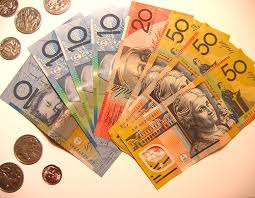
Key Points
- The Aussie Dollar traded lower against the New Zealand dollar, and currently remains in a downtrend.
- There was a major bullish trend line on the hourly chart of the AUDNZD pair, which was broken during the recent downside.
- In New Zealand, the Business Confidence released by the ANZ posted a decline from 16.0 to 15.5 in July 2016.
- In Australia, the Private Sector Credit released by the Reserve Bank of Australia posted a rise of 0.4% in June 2016, just as the market expected.
AUDNZD Technical Analysis
The Aussie dollar traded lower recently against the New Zealand dollar and tested the 1.0359 low. The AUDNZD pair during the downside move also broke a major bullish trend line on the hourly chart.

The pair is now well below the 21 hourly simple moving average and currently testing the 23.6% Fib retracement level of the last drop from the 1.0454 high to 1.0359 low.
One may consider selling rallies in AUDNZD around the 38.2% Fib retracement level of the last drop from the 1.0454 high to 1.0359 low.
ANZ Business Confidence
Today during the Asian session, the New Zealand Business Confidence, which shows the business outlook in New Zealand and allows analysis of economic situation in the short term was released by the ANZ.
The forecast was lined up for no change in July 2016 from 16.0. However, there was a minor decline to 15.5. In Australia, the Private Sector Credit, which is an amount of money that the Australian private sector borrows was released by the Reserve Bank of Australia. The market was expecting a rise of 0.4% in June 2016, compared with the previous month, and the result was as expected. The report stated “Following the introduction of an interest rate differential between housing loans to investors and owner-occupiers in mid-2015, a number of borrowers have changed the purpose of their existing loan; the net value of switching of loan purpose from investor to owner-occupier is estimated to have been $43 billion over the period of July 2015 to July 2016, of which $1.0 billion occurred in July”.
Overall, the Aussie dollar may continue to remain under a bearish pressure versus NZ dollar.

